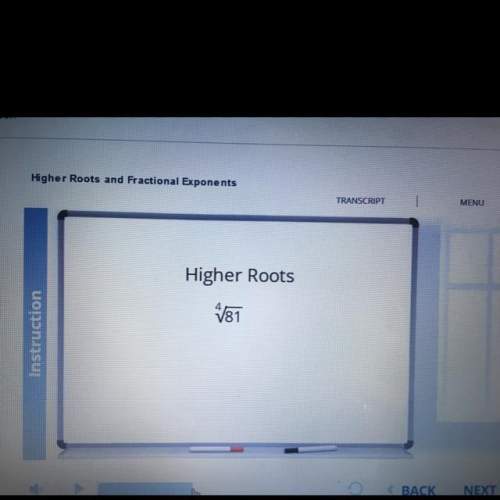
Mathematics, 06.12.2020 20:40, mova1o
Daniela began a plan for this proof.
Since ∠1 and ∠2 are supplementary and ∠2 and ∠3 are supplementary, then m∠1+m∠2=180° and m∠2+m∠3=180°. If she can get m∠1 and m∠3 to both equal the same expression, she can use the transitive property of equality to set them equal to each other.
How can Daniela get m∠1 and m∠3 to both equal the same expression?
A) She can subtract m∠2 from both sides of m∠1+m∠2=180° and m∠2+m∠3=180°.
B) She can subtract m∠1 from both sides of m∠1+m∠2=180°, and subtract m∠3 from both sides of m∠2+m∠3=180°.
C) She can subtract 180° from both sides of m∠1+m∠2=180° and m∠2+m∠3=180°.
D) She can measure m∠1 and m∠3 with a protractor.

Answers: 1
Other questions on the subject: Mathematics

Mathematics, 21.06.2019 19:30, LordYoshee8676
Julian wrote the following numeric pattern on the board3,10,17,24,31,38.what numbers of julian's pattern are compound numbers.
Answers: 2



Mathematics, 22.06.2019 05:30, dimpleschris101
Which answer choice listed below is thewhich answer choice listed below is the inverse function of ƒ(x) = x-3 x+3 , x ≠ -3? a) ƒ-1(x) = 3 ( x+1 x-1 ), x ≠ 1 b) ƒ-1(x) = -3 ( x+1 x-1 ), x ≠ 1 c) ƒ-1(x) = 3 ( x-1 x+1 ), x ≠ -1 d) ƒ-1(x) = -3 ( x-1 x+1 ), x ≠ -1inverse function of ƒ(x) = x-3 x+3 , x ≠ -3?
Answers: 1
Do you know the correct answer?
Daniela began a plan for this proof.
Since ∠1 and ∠2 are supplementary and ∠2 and ∠3 are supplement...
Questions in other subjects:

English, 22.06.2019 23:30



Mathematics, 22.06.2019 23:30













